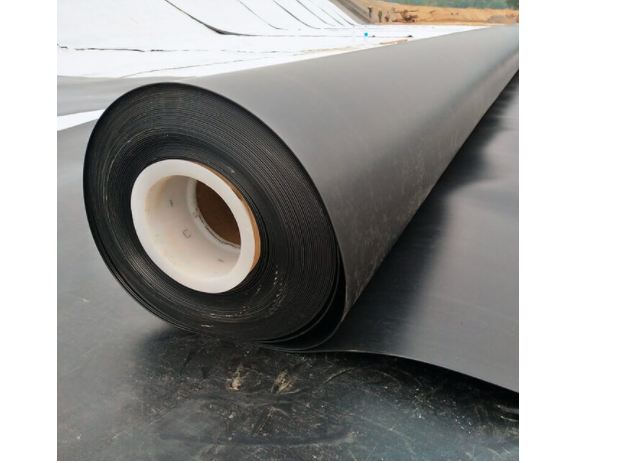- Understanding the Role of Geomembrane Liners in Waste Management
- Innovations in Geomembrane Liners for Water Management
- Geomembrane Liners: A Comprehensive Guide
- The Future of Geomembrane Liners in Civil Engineering
- Geomembrane Liners: Enhancing Landfill Stability
Manager:
WhatsApp:+86 177 0135 2670
Tel:+86 177 0135 2670
Email:marketing@okorder.com
Address:3rd Floor, No.2 Building, No.1 Sanlihe Road
The Geomembrana para Pisicultura Aquaculture Revolution
An ally has appeared on the scene of vast aquaculture, where the water is life and fish are the food. Modern fish farming relies on geomembrana para piscicultura, which offers a secure home for aquatic species and a sustainable approach to fish farming in future. This article explores the various types of geomembranes used in aquaculture with their advantages, areas of application and how they affect aquatic ecosystems.
The Silent Guardian: Introducing the Geomembrane
Aquaculture’s heart is where we find a versatile and strong material known as a geomembrane (geomembrana para piscicultura). Made from petroleum, this highly impermeable material is made into circular tanks ranging from 3 to 30 meters in diameter. These tanks mark new possibilities for increasing fish production, especially for tilapia.
A Productive and Environmentally Friendly Alternative
For more than just a fad, the use of geomembranes in fish farming is seen as an environmentally friendly alternative that benefits farmers economically. As an option that requires expert guidance and technical support, today many fish farmers consider using only one type of liner-geomembrane. They provide a closed environment that enhances good health conditions for growth of aquatic species.
The Art of Constructing Geomembranes
Building geo membrane tanks is a precise process that combines artistry with utility. Each tank must be carefully planned so as not to waste space while taking into consideration efficiency factors such as controlled environment for fish. It can be done by applying high density polyethylene (HDPE) or other polymers which are adaptable to any substrate.
A Seamless Integration with Nature
Seamlessness when interacting with the natural world is one attribute that makes geo membranes highly remarkable. Designed to last long against time and weathering effects; they act as impenetrable barriers preventing seeping of water as well as contamination. Thus, the tank’s aquatic ecosystem remains clean and healthy.
The Benefits of Geomembrane in Aquaculture
There are numerous advantages of using geomembranes in fish farming. They offer practical solutions to water conservation and environmental protection. Here are some of the main ones:
Enhanced Production Efficiency
Geomembrane allows for fish production intensification in recirculation systems, aquaponics or biofloc systems. They create a controlled environment that is easy to monitor and manage, resulting in higher yields and better quality fish.
Durability and Chemical Resistance
The strength of geomembranes is known since they resist chemicals. This makes them suitable for building artificial ponds or lagoons which are usually exposed to aggressive substances. Therefore, they can last long without much maintenance.
UV Resistance and Environmental Protection
A small amount of carbon black added into geomembranes helps to increase their lifespan by protecting them against UV rays. Furthermore, these impermeable sheets do not contribute to pollution; they are friends to environment as well because they prevent soil, river and groundwater pollution by being non-toxic
Stories from the Field: Personal Accounts
The significance of geomembranes in aquaculture is not just evident in the numbers, but also in the personal experiences of those who have accepted this technology. Fish farmers that have integrated geomembranes into their operations have experienced improved fish health, increased productivity and a reduced environmental footprint.
Embracing Innovation for a Sustainable Tomorrow
The use of geomembranes in aquaculture bears testimony to our ability to come up with new ideas and adapt to changing industry demands. As we look forward, it is clear that sustainable practices of tomorrow will be influenced significantly by geomembrane.
In Conclusion: The Enduring Legacy of Geomembrane in Aquaculture
“Geomembrana para piscicultura” stands for more than just a material; it symbolizes our dedication to sustainable aquaculture. In drawing to an end this exploration, let’s remember the huge impact on both industry and environment caused by geo membranes as they are not only increasing production but keeping alive our aquatic ecosystems for future generations ensuring profitability and environmental responsibility.
Personal Stories from the Field
It is not only about figures; what counts most here are stories told by people who actually practice this technology. Those fish farmers who installed geomembranes on their farms have seen such positive changes as healthier fish, higher yields and eco-friendly production.
A Commitment to Sustainability
Aquaculture journey with geosynthetic liners has always been about innovation, being adaptable, and having deep commitment to sustainability. It’s not about purchasing product, but invest in future of aquatic farming while ensuring prosperity for generations coming after us.
The Future of Aquaculture with Geomembrane
Therefore, there is no doubt that the role played by Geo-membrane is set to increase even as global awareness increases over sustainability issues because its demand will continue rising so as to make sure that worldwide fish farming remains sustainable yet successful.

- Previous:Price Increase: Unveiling the “Precio de Geomebrane por m2” and Its Influence on Our Sustainable Future
- Next:Water’s Worth: A Study of “Tanques de Geomembrana Precios" and Its Impact on Sustainable Aquaculture






